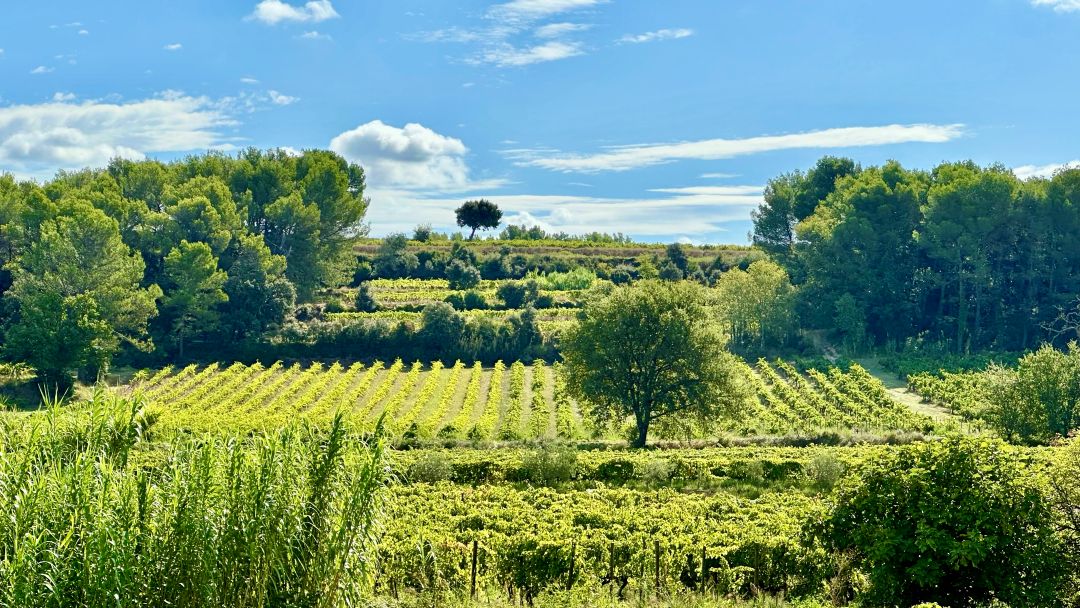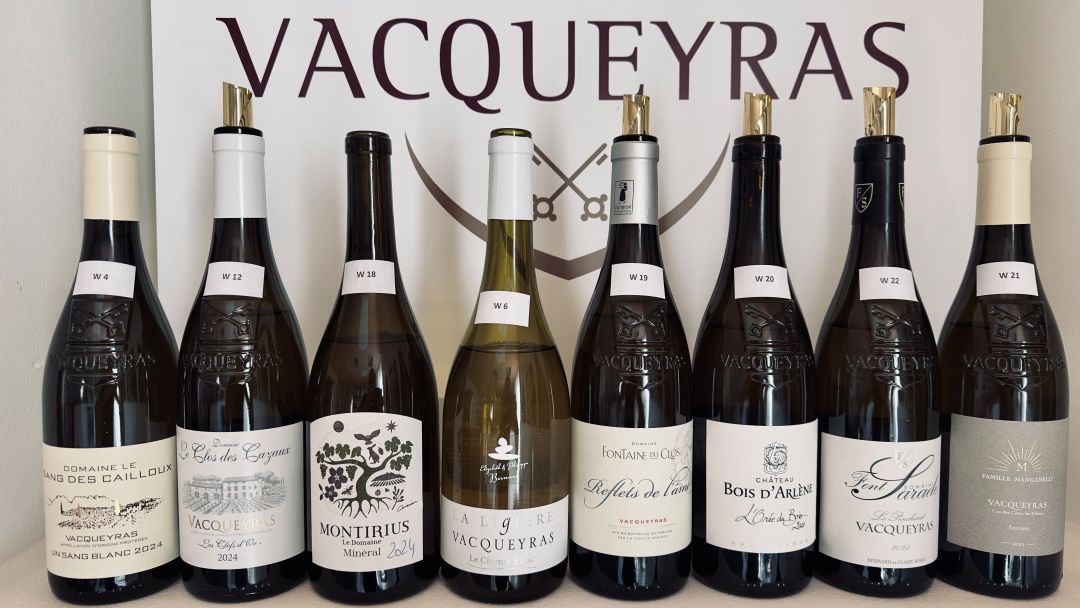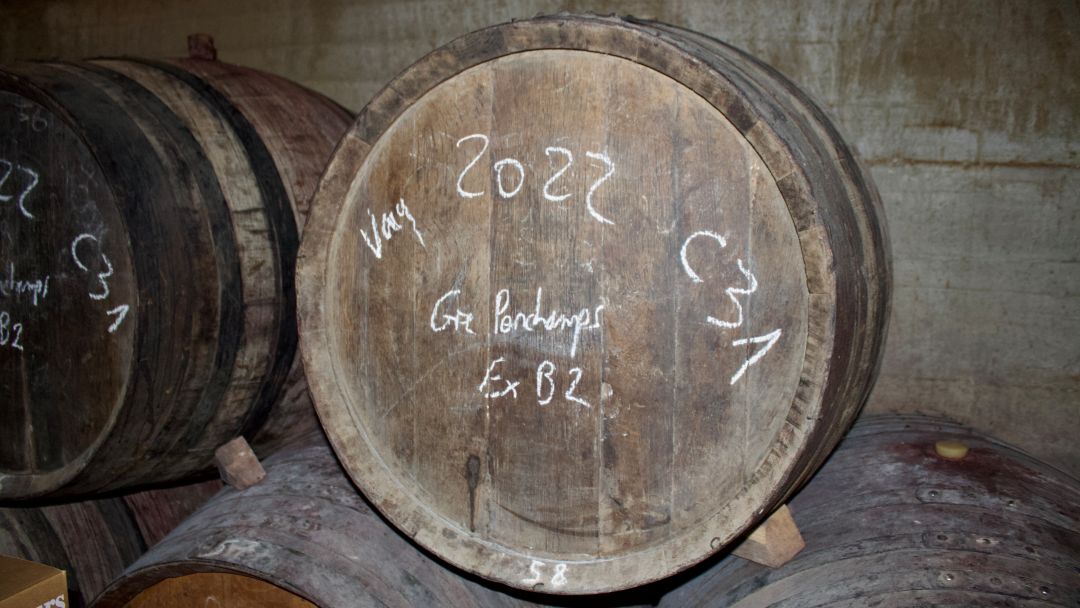Browse using the new Vinous website now. Launch →
Printed by, and for the sole use of . All rights reserved © 2015 Vinous Media
Vacqueyras: The Long Road to Recognition
BY NICOLAS GREINACHER | NOVEMBER 18, 2025
Once hailed as the hidden gem of the Southern Rhône Valley, Vacqueyras increasingly finds itself at a moment of reflection. The appellation, granted AOC status in 1990, has achieved steady gains in quality over the years, yet its core identity remains elusive. Before I share my insights on this topic, let’s zoom in on 2024, a vintage that came with its own challenges across the Southern Rhône.
The 2024 Vintage
After two years of dry and hot conditions, the return of sustained spring rainfall in 2024 set a very different tone. January and February were punctuated by alternating rain and bursts of Mistral wind, followed by a notably wet March that brought as much as 150 millimeters of precipitation and even snow at the base of Mont Ventoux, as reported by Manon Saurel of Domaine Montirius.
These cool, damp conditions limited early disease pressure and delayed vine development, but by May, the combination of warmth and humidity created a challenging environment for mildew control. Many growers, especially those working organically or biodynamically, had to intervene more frequently than usual, typically between eight and ten treatments, as Frédéri Férigoule of Domaine Le Sang des Cailloux recalled.

Vacqueyras vineyards in early September 2025, nestled amid lush Mediterranean vegetation.
Spring marked one of the most humid periods Vacqueyras had seen in recent years, with persistent rainfall and overcast skies through much of May and early June. Warm days around 30°C (86°F), combined with low wind and morning fog, heightened the risk of downy mildew. Despite high fungal disease pressure, the relatively cool temperatures of early summer helped to prevent severe losses like those seen in 2018. Vineyard work was intense, with growers mowing, thinning leaves and improving airflow between rows to dry the canopies. By late June, conditions began to stabilize, allowing the vines to recover and progress toward a steady—if somewhat delayed—ripening phase.
July and August then brought a more settled rhythm. Temperatures hovered around 30-32°C (86-90°F) with occasional peaks above 35°C (95°F), but without the prolonged heatwaves that characterized 2022 or 2023. A few storms in late July provided timely relief for the vines, followed by a mild August with minimal rainfall and balanced ripening. The absence of excessive heat meant that sugar accumulation remained moderate and acidity was preserved, giving the 2024 wines a fresh edge. My overall impression across the appellation is of a measured, temperate season that favored balance over concentration, even if yields were limited.
Harvest began in late August for white varieties and in early September for reds. Early September storms brought heavy rainfall followed by a period of cool, windy weather as the Mistral returned. Picking took place under humid conditions, which helped retain natural acidity and aromatic lift but required careful sorting in the cellar. Most Vacqueyras producers brought in all their grapes by the end of the month, with the appellation reporting average yields of 28.8 hectoliters per hectare, roughly 5-10% below the yields of 2023 and 2022.
Stylistically, 2024 looks set to deliver wines of moderate structure and notable balance, with measured Mediterranean richness. The reds display supple textures, fresh fruit and gentle tannins, offering early approachability while maintaining enough depth for medium-term aging. Whites, too, benefited from the cooler finish to the season, showing clarity and lift. Some producers waited for increased ripeness and achieved more muscular styles, while others embraced the naturally vivid acidity that the vintage provided. Overall, 2024 will likely be remembered as a classic, even-tempered year in Vacqueyras—the wines are less opulent than their recent predecessors, yet full of understated charm.

A fine lineup of 2024 white Vacqueyras, showcasing diverse blends that feature varieties such as Viognier, Roussanne, Marsanne and Clairette.
An Appellation at a Crossroads
Vacqueyras has made undeniable progress in quality since its official Cru designation, but the appellation continues to wrestle with its own identity and market positioning. Overshadowed by its more famous neighbours—Gigondas to the north and Châteauneuf-du-Pape to the west—Vacqueyras risks being perceived as merely “yet another Southern Rhône Cru” rather than a destination in its own right. The wines can be excellent, often reflecting a sun-soaked expression of garrigue and ripe fruit, but the region still lacks a unified vision. As the market shifts and pressures mount, Vacqueyras needs time and coherence to define what truly sets it apart in the Rhône landscape.
Economically, the appellation is navigating turbulent waters. Historically, Belgium and the United States were key export markets, but both have dramatically contracted. Asia—once a growing outlet—has not recovered economically from the pandemic. The domestic French market has filled some of that void, though sales are increasingly fragmented and small-scale, driven by hundreds of independent retailers rather than stable wholesale networks. Only a minority of producers have carved out profitable niches, often through direct relationships with cavistes and regional agents.
The majority of wineries today remain dependent on bulk sales or the cooperative system, which has struggled to adapt to changing market dynamics and is now largely confined to the entry-level segment. In 2024, Vacqueyras bulk wine represented 59% of total sales volume, compared to just 34% in 2015. The cooperative model, once the backbone of Vacqueyras, has also lost some of its influence. In past decades, this model provided financial stability and managed a significant share of production, but declining prices and an inability to pivot toward premiumization have left many growers disillusioned. Some transitioned into estate bottling, investing heavily in equipment and branding, but the market quickly became saturated.

An aged wine barrel resting in the cellars of Château des Tours, the celebrated Vacqueyras estate.
With too many producers chasing too few buyers, bulk prices collapsed, and competition from newcomers in nearby appellations offering less expensive alternatives increased. While Gigondas and Châteauneuf-du-Pape have managed to sustain higher price points through strong reputations and clearer identities, Vacqueyras remains more vulnerable, neither as affordable as generic Côtes-du-Rhône nor as prestigious as its two peers.
Vacqueyras possesses notable geological diversity, stretching from the alluvial plains to the first slopes of the Dentelles de Montmirail, but this diversity has not translated into a clear collective narrative. Some producers emphasize richness and color intensity, others finesse and aromatic lift, but disagreements over regulations—such as the INAO’s recent insistence on minimum color density—have hindered stylistic evolution. (INAO is a French government body that regulates and protects agricultural products with official designations like AOC.) Producers who prefer making lighter-colored, Cinsault-driven red wines, such as Château des Tours, are often penalized. In 2014 and 2015, for instance, their Vacqueyras was declassified for lacking sufficient color depth, even though those two particular wines exemplified the very best of the appellation. Meanwhile, other growers add more Syrah simply to satisfy the official color requirements. These bureaucratic constraints not only stifle creativity, but also blur the appellation’s potential to express its varied stylistic ranges under the same name.
If Vacqueyras is to move forward, it must first look inward. The future depends less on expanding production and more on refining purpose—on articulating what makes these wines singular. That might mean embracing diversity rather than uniformity and allowing flexibility with regard to color. The region’s economic resilience, combined with its wealth of old vines and capable growers, gives it a strong foundation. But until Vacqueyras reconciles its traditions with modern market realities and defines a cohesive voice, it will remain caught between two worlds: acknowledged yet not deemed interesting enough, promising yet still in search of a true identity among the great Crus of the Southern Rhône.
I tasted all the wines for this report in Vacqueyras in early September 2025.
© 2025, Vinous. No portion of this article may be copied, shared or redistributed without prior consent from Vinous. Doing so is not only a violation of our copyright but also threatens the survival of independent wine criticism.
You Might Also Enjoy
Focus on Vacqueyras: Latest Vintages and Top Producers, Nicolas Greinacher, October 2024
Vacqueyras New Releases: Walking the Underdog, Nicolas Greinacher, November 2023
Vacqueyras: The Southern Rhône’s Stealth Appellation, Josh Raynolds, February 2020
Vacqueyras 2016 and 2015: Value and Consistency, Josh Raynolds, November 2018
Show all the wines (sorted by score)
- Aimé Arnoux
- Arnoux et Fils
- Bonpas
- Cellier des Princes
- Château Bois d'Arlène
- Château des Roques
- Château des Tours
- Château du Trignon
- Delas Frères
- Demoiselle Suzette
- Domaine de Fenouillet
- Domaine de la Charbonnière
- Domaine de la Ganse
- Domaine de Montvac
- Domaine des Amouriers
- Domaine d'Ouréa
- Domaine du Pesquier
- Domaine du Terme
- Domaine Fontaine du Clos
- Domaine Font Sarade
- Domaine Grandy
- Domaine Julien Delhomme
- Domaine La Bouïssiere
- Domaine La Fourmone
- Domaine La Ligière
- Domaine La Monardière
- Domaine La Perdrière
- Domaine Le Clos des Cazaux
- Domaine Le Sang des Cailloux
- Domaine les Sibu
- Domaine Montirius
- Domaine Saint-Damien
- Domaine Saint Laurent
- Domaine Santa Duc
- Domaine Vallis Petra
- Famille Deltin
- Famille Manganelli
- Gabriel Meffre
- Gigondas la Cave
- Gigondas La Cave
- Grandes Serres
- Hugues Thierry
- Jérôme Quiot
- La Ferme du Mont
- Lavau
- Le Mas des Flauzières
- Louis Bernard
- Maison Bouachon
- Maison Chapoutier
- Mas des Restanques
- Ogier
- Pierre Amadieu
- Pierre-Henri Morel
- Rhonéa
- Vacqueyras La Perdrière
- Xavier Vignon
